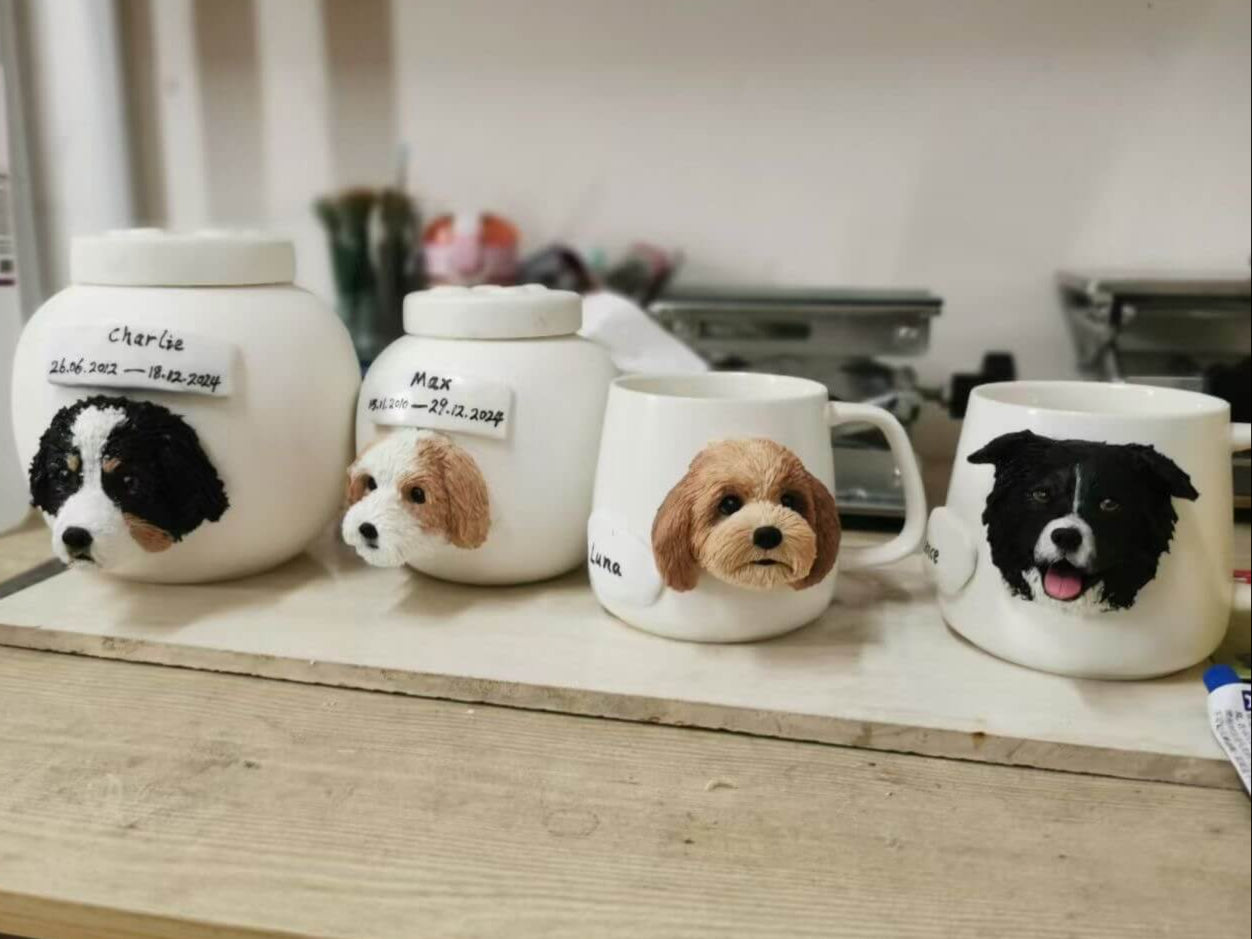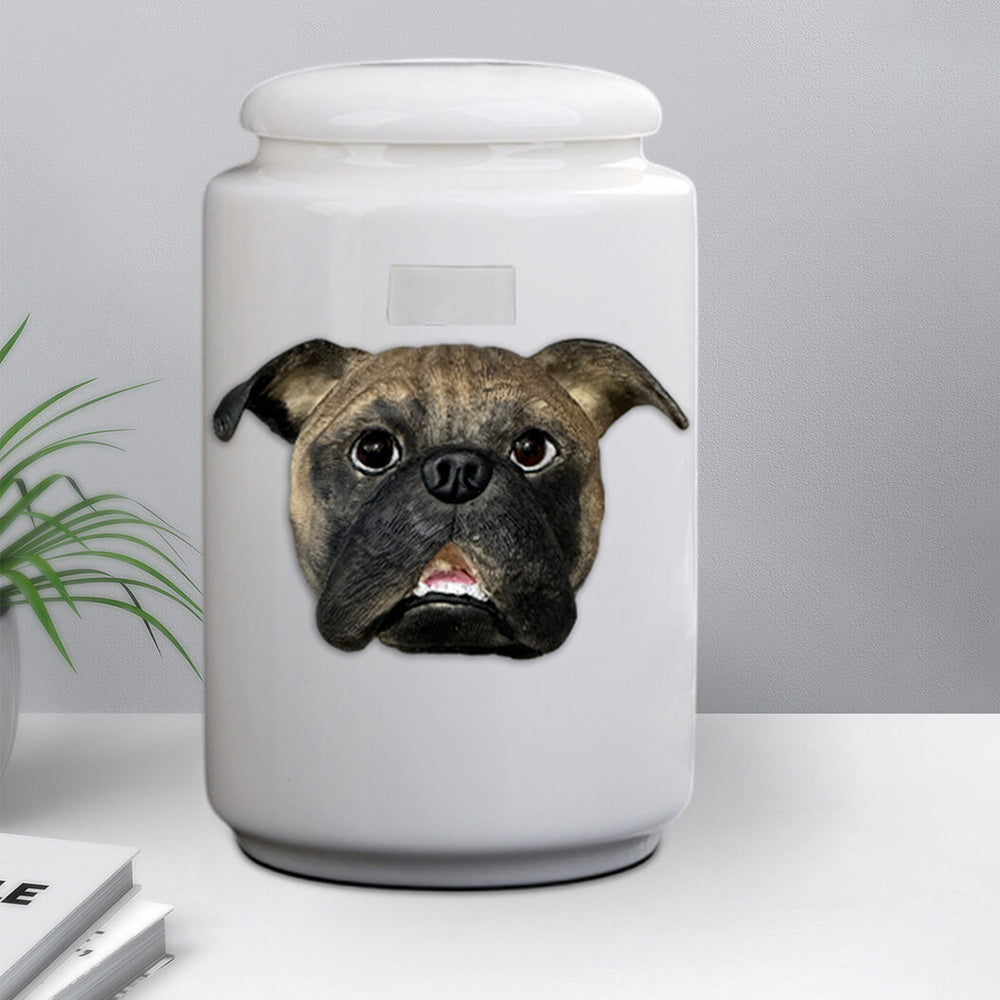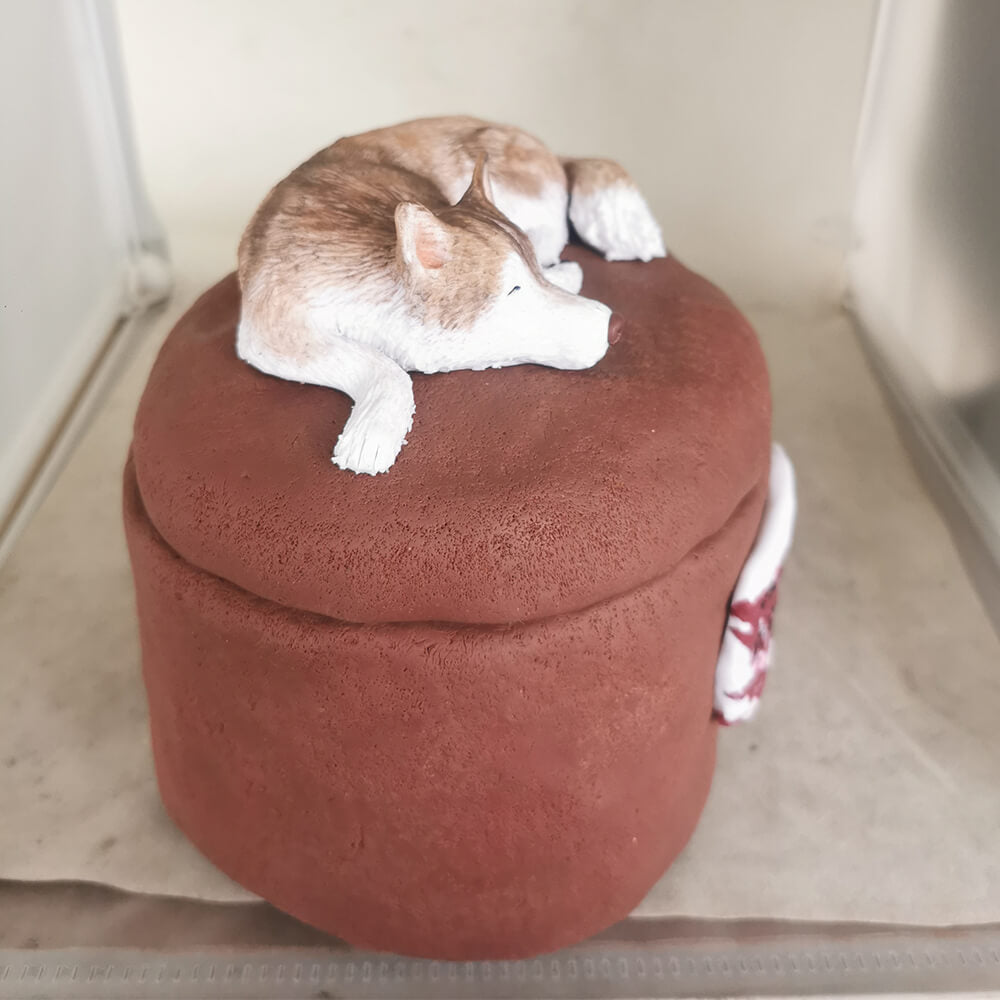Art lovers and creators are now choosing eco-friendly options for their projects. Sustainable sculpting materials are becoming more popular, especially for pet clay sculptures.
Using sustainable materials opens up new possibilities for artists.By picking sustainable materials, sculptors can lower their carbon footprint and still create amazing art. These eco-friendly options often add unique textures and qualities to pet clay sculptures. This allows for fresh artistic expressions. As more sculptors use these materials, the art world is seeing a beautiful mix of creativity and caring for the environment.
Key Takeaways
- Sustainable materials are becoming popular in clay sculpting
- Pet-themed sculptures benefit from eco-friendly clay options
- Eco-conscious art practices reduce environmental impact
- Sustainable clay offers unique textures for artistic expression
- Artists are blending creativity with environmental responsibility
Introduction to Sustainable Clay Sculpting

Green sculpting is changing the art world. Artists are now using eco-friendly materials for their work. This mix of sustainability and creativity is a new chapter in clay sculpting.
Sustainable clay sculpting focuses on materials that don't harm the planet. These come from sources that can be replenished or are recycled. This way, artists can create while protecting the environment.
- Reduced carbon footprint
- Less waste generation
- Fewer harmful chemicals
- Support for local economies
Working with sustainable clay can lead to unique textures and finishes. This makes each piece special and one-of-a-kind.
| Traditional Clay | Sustainable Clay |
|---|---|
| High energy consumption | Lower energy needs |
| Chemical additives | Natural ingredients |
| Non-renewable sources | Renewable or recycled sources |
| Limited biodegradability | Improved biodegradability |
More artists are choosing green sculpting, which boosts demand for eco-friendly supplies. This trend pushes manufacturers to create new, sustainable materials for art.
Environmental Impact of Traditional Clay Materials
Clay sculpting has been loved for centuries, but its harm to the environment is often ignored. The impact of clay production goes beyond the artist's studio, affecting our planet in many ways.
Carbon Footprint of Clay Production
Clay mining and refining release a lot of greenhouse gases. Big machines for extraction burn fossil fuels, causing climate change. Kilns for firing clay use a lot of energy and release carbon dioxide.
Waste Generation in Sculpting Processes
Sculpting waste is a big problem in the art world. Unused clay, trimmings, and failed pieces often go to landfills. Clay doesn't break down easily, causing long-term environmental problems.
Chemical Pollutants in Conventional Clay
Traditional clay often has toxic substances. These can pollute soil and water, harming wildlife and possibly our food. Common pollutants include:
- Heavy metals like lead and cadmium
- Synthetic dyes and pigments
- Formaldehyde-based binders
| Material | Environmental Impact | Health Risks |
|---|---|---|
| Traditional Clay | High carbon footprint, non-biodegradable waste | Potential exposure to toxic substances |
| Eco-Friendly Clay | Lower emissions, biodegradable options | Reduced risk of chemical exposure |
It's important for artists and buyers to know about these issues. By understanding the harm caused by clay production, sculpting waste, and toxic materials, we can make better choices. This helps protect our planet while still enjoying this ancient art.
Benefits of Using Eco-Friendly Clay Materials
Eco-friendly clay materials have many benefits for sculptors and the planet. They help in creating art while also improving health and the environment.
Using eco-clay makes studios healthier. It doesn't release harmful dust or fumes like regular clay does. This makes it safer for artists, lowering the risk of breathing problems.
These clays also help the environment. They're made from renewable sources or recycled materials. This means less harm to nature and a smaller carbon footprint for artists.
- Reduced environmental impact
- Improved studio air quality
- Decreased health risks for artists
- Support for sustainable practices
The final art pieces also benefit from eco-clay. They can have special textures and finishes. Plus, they need less heat to fire, saving energy and reducing harm to the environment.
Choosing eco-clay makes art more eco-friendly. As more artists use it, the art world becomes greener and more sustainable.
Types of Sustainable Clay for Sculpting
Sculptors today have many eco-clay varieties to pick from. These materials are good for the planet and offer creative freedom. Let's look at some green clay options that are becoming popular in the art world.
Natural Clay Options
Natural clays come from the earth. They include kaolin, bentonite, and terracotta. Kaolin is great for detailed work because of its fine texture.
Bentonite is perfect for big sculptures because it's very pliable. Terracotta is loved for outdoor art because of its rich colors.
Recycled Clay Alternatives
Recycled clay gives old materials a new life. Pottery studios and schools often reuse clay that would otherwise be thrown away. This makes fresh, workable material.
It's a way to reduce waste and save resources. Some artists mix different recycled clays to create unique blends.
Biodegradable Clay Compounds
New biodegradable clays are being developed. They break down naturally, which is good for the environment. Some are made from plant-based materials like corn starch or paper pulp.
Others use natural fibers for strength and texture. This makes them a great choice for eco-friendly art.
| Clay Type | Environmental Benefit | Best Use |
|---|---|---|
| Natural Clay | Minimal processing | Traditional sculptures |
| Recycled Clay | Reduces waste | Mixed media art |
| Biodegradable Clay | Decomposes naturally | Temporary installations |
Choosing these sustainable materials lets artists make beautiful pieces while helping the environment. There's a green option for every artistic idea.
Techniques for Working with Eco-Friendly Clay
Eco-clay techniques open up new ways for sustainable sculpting. Artists can make beautiful pieces while being kind to the planet. Let's dive into the key aspects of using green clay materials.
Handling Differences from Traditional Clay
Eco-friendly clays feel different from regular clays. They might be grittier or smoother. Artists need to adjust their methods.
Kneading and shaping need a gentle touch to avoid cracks. Trying different pressures and motions helps get the right shape.
Drying and Firing Considerations
Green clay firing needs special care. These clays dry faster than usual. Slow air-drying prevents warping and cracking.
Some eco-clays fire at lower temperatures, saving energy. Others need longer cooling times. Always follow the manufacturer's guidelines for best results.
Finishing and Glazing Eco-Clay Sculptures
Finishing touches are key in sustainable sculpting. Many eco-friendly glazes work well with green clays. Natural pigments and non-toxic sealants add beauty.
Some artists choose unglazed finishes to show the clay's natural beauty. Polishing with smooth stones adds a subtle shine without chemicals.
Mastering these eco-clay techniques lets artists create stunning sculptures. It supports environmental conservation. Working with sustainable materials opens up new creative paths and helps make the art world greener.
Pet Clay Sculptures: Creating Eco-Friendly Animal Art

Pet lovers can now celebrate their furry friends with sustainable pet figurines. Eco-friendly animal sculptures are a popular way to show love for pets and care for the environment. Artists use earth-friendly materials to create green pet art.
Working with eco-clay opens new doors for pet portraits. The clay's texture and malleability let artists capture the essence of beloved animals. From cats to dogs, rabbits to hamsters, sustainable clay brings these creatures to life in miniature form.
Creating eco-friendly animal sculptures needs some technique adjustments. The clay might feel different than traditional materials, but it often looks more natural. Many artists say the organic qualities of sustainable clay make their pet figurines look more lifelike.
- Choose locally sourced clay to reduce carbon footprint
- Incorporate natural pigments for coloring
- Use recycled materials for accessories and decorations
Green pet art honors our animal companions and teaches others about sustainability. These pieces start conversations about eco-friendly practices in art and daily life. By choosing sustainable pet figurines, art lovers help create a cleaner, greener future while cherishing memories of their furry friends.
Conclusion
Sustainable clay sculpting is changing the art world. Artists now have green options that help the planet. These materials let them be creative without harming the environment.
The art world is moving towards sustainability. New tech makes eco-friendly clay easier to use. Artists are finding new ways to be creative and care for the earth.
Choosing green clay helps both artists and the planet. Sculptors can make beautiful pieces while protecting our world. As more join, the positive impact grows. This shows that art and sustainability can go together, leading to a greener future.









